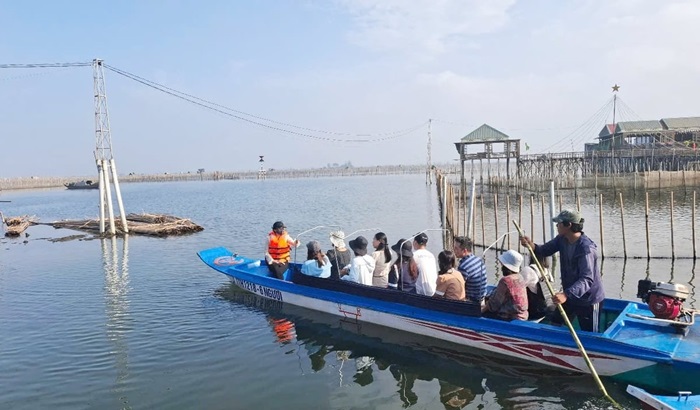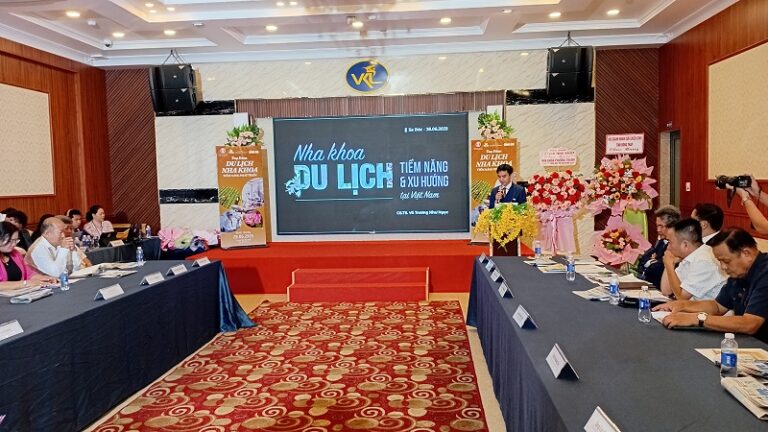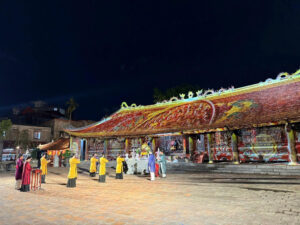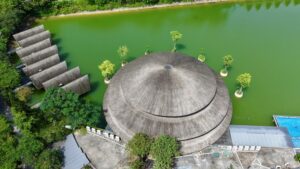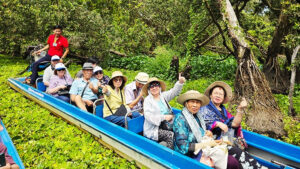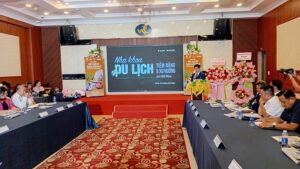Though local residents enthusiastically join the afforestation movement, it’s still early to say that Bac Kan’s forests would be safe.
All rushing to grow manglietia conifera
Hoang Van Do in Cho Ra Town said that he has just chopped down all acacia trees to grow manglietia conifera. At first, responding to the provincial authorities’ call, he grew acacia mangium on the area of one hectare. The trees grew very rapidly which can provide timber just after 4-5 years of growing. However, the demand for this kind of timber is not high.
“The province gives support to acacia growers, while we do not have to spend much time to take care for them. However, the timber is cheap,” Do explained.
The first class acacia timber can be sold at 700,000-900,000 per cubic meter, while lower quality timber can be sold at 300,000 or 400,000 dong only. Therefore, Do and other local residents decided to shift to grow manglietia conifera. Though it takes a longer time to grow, manglietia conifera timber can be sold more easily, while the price is higher at 1 million dong per cubic meter.
As a result, the whole land area of 9.2 hectares, which was designed for growing acacia, has been panted with manglietia conifera. Despite the provincial program on growing acacia in most of the forest area, local residents still rush to grow manglietia conifera. Those, who offer to sell manglietia conifera forests these days, would be very easy to find buyers and make fat profit.
Dang Thi Anh Tho, Deputy Head of the Ba Be district’s Sub-department for agriculture and rural development, has admitted that the plan on growing acacia trees on 70 percent of the forest growing area in 2012 is unfeasible.
“Local residents have been told that acacia growing would help develop the wood processing industry. However, there is no big wood processing enterprise in the district. Meanwhile, the timber sale prices are defined by private businessmen,” Tho explained.
According to the Bac Kan provincial authorities, in 2011, manglietia conifera trees were grown on 70 percent of the plantation forest area. Manglietia conifera timber has been mostly sold to the companies from other provinces to be used as pillars at construction sites.
At present, growing manglietia conifera is considered the best way for farmers. However, experts have warned that if people all rush to grow manglietia conifera, they may feel regret in the future. As the growing area keeps rising steadily, the market remains unstable; the sale prices would be forced down one day. This may happen that local residents would have to chop down manglietia conifera trees to grow other kinds of tree one day.
The experts have also warned that SAHABAK, a wood processing factory in Cho Moi district would lack timber materials to process when it becomes operational. The factory needs 15,000 cubic meters of acacia timber. However, local residents now do not want to grow acacia.
Forests still bleeding
According to the Bac Kan provincial Forest Ranger Unit, 6000 violation cases were found in the last five years, while 1000 cases occurred in 2011 alone.
Though the afforestation area keeps rising steadily, the precious trees in Bac Kan still have been compromised. In early March 2012, the local authorities discovered 226 cubic meters of timber from Burretiodendron hsienm trees were found chopped down illegally by lumberjacks.
The high profits from illegal forestry product trading have prompted people to exploit the forests spontaneously. The illegal precious timber exploitation has been occurring everywhere – on the Ba Be national park area in Ba Be district, the Kim Hy sanctuary area in Na Ri district and other bordering forests areas.
In the first three months of the year alone, 98 Burretiodendron hsienm trees, which can provide hundreds of cubic meters of timber, were chopped down.


